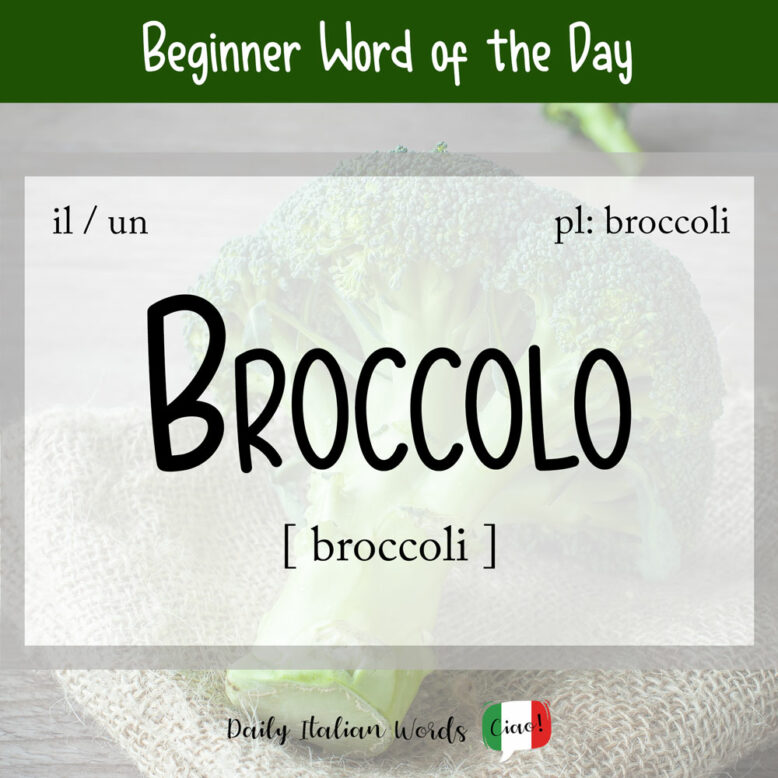Broccoli is one of a handful of Italian words that was imported into the English language in its plural form to denote the singular, much like panini, pepperoni and zucchini.
The proper singular is actually broccolo with an o rather than an i at the end of the word. It is the diminutive of brocco, meaning shoot or sprout, which in turn comes from the Latin broccus (projecting, pointed).

One possible reason broccoli entered English in its plural form is because it is often used in the plural in Italian.
Cuciniamo i broccoli al forno stasera.
We’re cooking baked broccoli this evening.

The individual florets of broccoli is known as cime di broccoli in Italian.
A related vegetable, which is a hybrid of broccoli and gai lan (Chinese kale), is the broccoletto, known as broccolini or baby broccoli in English. Compared to standard broccoli, it has smaller florets and longer, thinner stalks. (Note that in some regions of Italy they are called friarielli, cime di rape or rapini.)
Like many foods, broccolo also has a figurative meaning in Italian. It can refer to a stupid or foolish man who is easily duped, or someone who is clumsy in how they move or behave.
Ieri Maurizio ha fatto la figura del broccolo davanti alla ragazza che gli piace.
Yesterday Maurizio came across as a real dolt in front of the girl he likes.
Heather Broster is a graduate with honours in linguistics from the University of Western Ontario. She is an aspiring polyglot, proficient in English and Italian, as well as Japanese, Welsh, and French to varying degrees of fluency. Originally from Toronto, Heather has resided in various countries, notably Italy for a period of six years. Her primary focus lies in the fields of language acquisition, education, and bilingual instruction.


